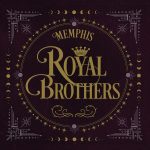How Dylan & Cash Broadened Nashville’s Reach

Session players necessarily take a back seat to the artists whose music they help create. A few, like Jerry Reed and Glen Campbell, gain their own stardom, and others, such as Motown’s Funk Brothers and the Muscle Shoals Swampers, gain renown even as their work remains seen in fragmentary measures. It’s only the rare, credit-reading fan who pieces together the full breadth of a studio musician’s work, and traces the connections of a player’s career through otherwise unconnected sessions and records. And even then, there are surprises to be learned, as album credits and studio logs aren’t always complete or accurate. Documentaries have told the stories of the Funk Brothers, Swampers and Wrecking Crew, but for every studio player who’s gained a moment in the spotlight, there are hundreds whose stories are told only through records labeled with other people’s names.
This collection tells the story of how Nashville’s session players, songwriters and producers came to collaborate on a broader stage in the late ‘60s and early ‘70s. At the time, Nashville wasn’t alone in building a studio culture dependent on sidemen, but it had built one of the most effective vertically-integrated music making machines. Nashville combined writers, producers, engineers, record labels, studios and stars with a handful of A-list players whose speed and precision belied their agility and creativity. That system’s artistry was expanded by the injection of outside influences, spearheaded by Dylan’s 1966 sessions for Blonde on Blonde. In the wake of Dylan’s collaboration with Charlie McCoy, Kenny Buttrey and Wayne Moss, Nashville opened itself up to new partnerships and non-Nashville artists came looking to expand their musical horizons.
In 1969, Dylan and Cash’s mutual admiration resulted in sessions that yielded the commercial release of “Girl From the North Country” on Nashville Skyline, but they also seem to have stoked Cash’s desire to collaborate outside the Nashville sphere. Through his ABC television show, taped at the Ryman from 1969 to 1971, Cash brought numerous artists to Nashville, forging on-stage musical collaborations (such as Derek and the Dominos performance of “Matchbox” with Cash and Carl Perkins), and brokering introductions that survived the show. Most notable was Neil Young’s work with steel player Ben Keith, bassist Tim Drummond and drummer Kenny Buttrey, who can all be heard prominently on Harvest, including the hit single “Heart of Gold.”
Several pop and folk artists, including the Beau Brummels and Ian & Sylvia, found artistic renewal in Nashville, and others, highlighted by Michael Nesmith’s “Some of Shelly’s Blues” (featuring the superb steel guitar of Lloyd Green), the Byrds’ “You Ain’t Goin’ Nowhere” and “Hickory Wind,” and Ringo Starr’s “Beaucoups of Blues” were freed to follow musical interests that had previously been held in check by various concerns. Simon & Garfunkel got sounds out of Nashville that were neither country nor what they had been producing back home. As with Neil Young’s long-term collaborative relationship with Ben Keith, Simon & Garfunkel developed a relationship with legendary guitarist Fred Carter, Jr. that continued long after they returned to recording in New York City.
Kris Kristofferson’s 1968 demo “If You Don’t Like Hank Williams” suggests that while Nashville may have developed insular ways and outsiders may have thought the city’s music industry to be parochial, there were many inside and outside the city eager to collaborate. No compilation on this theme could ever be complete, but the producers have done a good job of selecting (and, thankfully, cross licensing) music that mixes well-known hits with artistically and historically important tracks. Among the lesser-known gems are Charlie McCoy & The Escorts’ “Harpoon Man,” Flatt & Scruggs’ cover of Dylan’s “Down in the Flood,” George Harrison’s album track “Behind That Locked Door,” and a radio commercial that seeks to explain Sweetheart of the Rodeo. Pete Finney and Michael Gray’s song notes provide valuable context, but it’s the Nashville studio cats who tell the story. And it’s a great one. [©2015 Hyperbolium]




